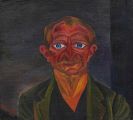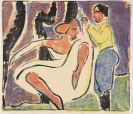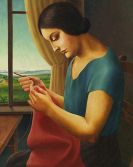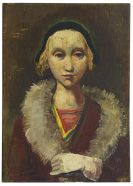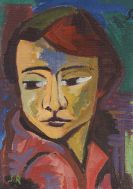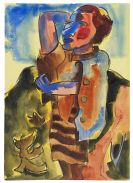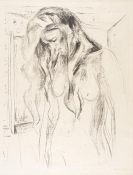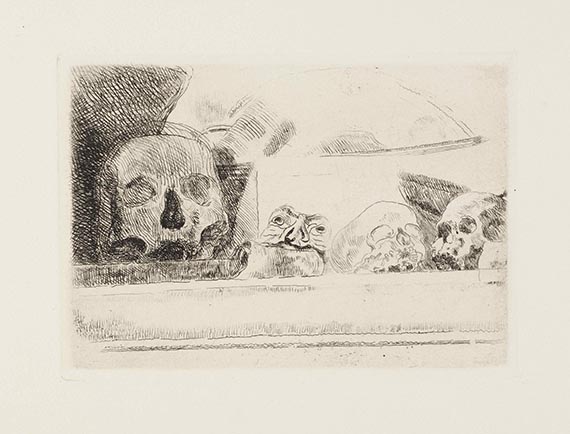
Conrad Felixmüller
Dresden
1897 -
Berlin
1977
After attending drawing classes at the Dresden "Kunstgewerbeschule" for one year, Conrad Felixmüller first attended the private school of the artist Ferdinand Dorsch in 1912 and the same year he entered Professor Carl Bantzer's class at the "Königliche Kusntakademie" in Dreseden, to start training as a painter.
In 1915 Felixmüller left the academy. He worked as a freelance artist in Dresden, but often went to Berlin, where he painted in Ludwig Meidner's studio. Conrad Felixmüller also contributed to the journal "Der Sturm", published by Herwarth Walden.
In 1917 Felixmüller founded the art and literature journal "MENSCHEN" together with the book dealer Felix Stiemer, with Felixmüller being responsible for the graphic design like he was in "Der Sturm".
At the same time he had exhibitons at Hans Goltz's in Munich and at the Dresden "Galerie Arnold" together with Heckel, Kirchner and Schmidt-Rottluff. In 1918 Conrad Felixmüller moved to Dresden, where he became the founder and chairman of the "Dresdner Sezession" and joined the "November-Gruppe". At the same time Felixmüller worked for various newspapers (e.g. "Die Sichel" in Regensburg and "Rote Erde" in Hamburg) and published several literary texts such as his autobiography "Mein Werden" (Kunstblatt) or his thoughts on "Künstlerische Gestaltung" (artistic design) (Kestnerbuch, Hanover).
Conrad Felixmüller's early creative work was strongly influenced by Expressionism, which he interpreted in a socio-critical way and soon transformed into his own form of expressive Realism. The powerful lines of his woodcuts capture scenes of everyday life. Around 1930 there was a trend towards change, which is thematically reflected in the increasingly genre-like narrative subjects and formally reflected in the pursuit of a calmer image language.
In 1933 40 of the artist's paintings were shown at the Dresden exhibition of "Degenerate Art".
In 1934 the artist moved to Berlin-Charlottenburg, hoping to be able to work more freely there. In 1937 151 of his works were confiscated from public collections. In 1941 the artist's Berlin home was destroyed by bombs. Felixmüller sought refuge in Damsdorf in the Mark. In 1944 the painter moved to Tautenhain. That same year he was called-up for military service. After a short time in Sovjet captivity, Conrad Felixmüller returned to Tautenhain in 1945.
In 1949 he was appointed professor at the Martin-Luther-Universität in Halle, where he taught drawing and painting at the faculty of education.
After his retirement in 1961 Conrad Felixmüller returned to Berlin.
Before his death in 1977 numerous exhibitions took place in East and West Germany, Paris, Rome, Bologna and Florence.
Would you like to sell a work by Conrad Felixmüller?
Infos for seller
